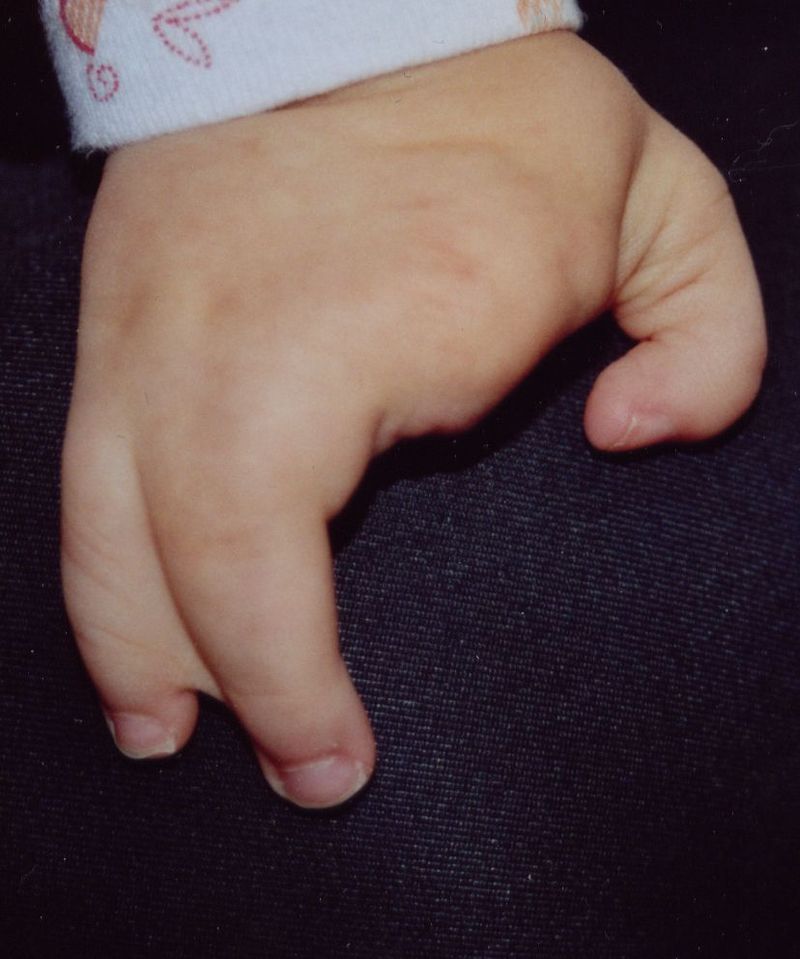
Ectrodactyly, split hand, or cleft hand (derived from Greek ektroma ‘abortion’ and daktylos ‘finger’) involves the deficiency or absence of one or more central digits of the hand or foot and is also known as split hand/split foot malformation (SHFM).
The hands and feet of people with ectrodactyly (ectrodactyls) are often described as “claw-like” and may include only the thumb and one finger (usually either the little finger, ring finger, or a syndactyly of the two) with similar abnormalities of the feet.

It is a substantial rare form of a congenital disorder in which the development of the hand is disturbed. It is a type I failure of formation – longitudinal arrest.
The central ray of the hand is affected and usually appears without proximal deficiencies of nerves, vessels, tendons, muscles and bones in contrast to the radial and ulnar deficiencies.
The cleft hand appears as a V-shaped cleft situated in the centre of the hand. The digits at the borders of the cleft might be syndactilyzed, and one or more digits can be absent. In most types, the thumb, ring finger and little finger are the less affected parts of the hand.
The incidence of cleft hand varies from 1 in 90,000 to 1 in 10,000 births depending on the used classification.
Cleft hand can appear unilateral or bilateral, and can appear isolated or associated with a syndrome.
NewLatter Application For Free







